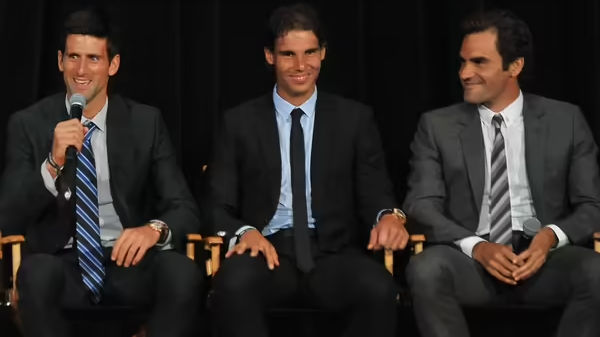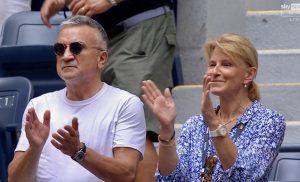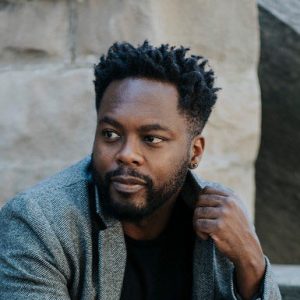With his win at the Australian Open, Rafael Nadal already had 21 Grand Slam titles, one more than Roger Federer and Novak Djokovic. He inched closer to another one with his quarterfinal defeat of world number one, Novak Djokovic in the 2022 French Open, as he storms into the semifinal to face world number 3 Alexander Zverev.
Nadal is out on his own, having attained a level of achievement in the sport that no other man has matched. However, it is an intriguing and disputed metric of success: In men’s tennis, the GOAT argument is extremely subjective and extends much beyond the simple number of Grand Slam singles championships.
Also read: ‘Honored to play a role in pushing you to achieve more’: Roger Federer to Rafael Nadal
His five-set win over Daniil Medvedev ranks among Nadal’s finest victories. He had to come back from a two-set deficit in a battle where the momentum bounced back and forth between the two players, only to find another gear just as Medvedev began to feel the strain of the match.
The forehand of Rafael Nadal is legendary, but he has added so much more to his game. Despite growing aches and pains, he pushed Medvedev over the court with drop shots and top-spin forehands, winning 2-6, 6-7 (5), 6-4, 6-4, 7-5. It was an incredible feat of endurance and tactical mastery.
The race to twenty-one has been enthralling.
Also read: Nadal Medvedev Australian Open final: Irreverent observations
Both Federer (knee injury) and Djokovic (deportation) were unable to compete in the Australian Open, allowing Nadal to go one better. The Nadal we saw in Melbourne isn’t the same as past versions of the Spaniard; he’s progressed to the next stage of his development. Each of the Big Three has had periods of dominance that have lasted longer than the other two. In the 2019 Wimbledon final, Federer had his last chance at 21 years old, but he was defeated by Djokovic.
Djokovic has recently been thought to be the most likely to reach 21 first, with last year’s US Open appearing to be Djokovic’s to lose. In August, Nadal withdrew due to a chronic foot condition he’d had since 2005, while Federer was out due to a knee injury he’d been dealing with since Wimbledon. So Djokovic went undefeated in New York at 21, only to lose in the final to Medvedev.
Also read: ‘I thought you were going to get tired’: Medvedev to Australian Open winner Nadal
Medvedev’s victory was only the second time in the past 19 major finals that someone other than the Big Three had won a Slam, despite the sport’s near-20-year reign of terror. Despite the fact that players have come and gone, the trio’s influence on the sport has been phenomenal.
When Nadal made his breakthrough in 2003, it was Federer who dominated, winning 12 of the potential 20 Grand Slams between 2003 and 2007. Then there was Nadal’s remarkable run from 2008 to 2010, when he won six Slams and Federer swooped in for four.
During these two years, Djokovic won his first Grand Slam, the 2008 Australian Open, and the balance of power shifted in his favour from 2011 to 2016, when he won 11 Slams to Federer’s one and Nadal’s five. Injuries plagued Nadal in 2015 and 2016, but he bounced back to win four French Opens from 2017 to 2020, including No. 20 at Roland Garros in 2020.
Also read: In Pics: Rafael Nadal wins Australian Open 2022, makes history with 21 Grand Slams
While Nadal currently leads his two sparring opponents by one Slam, their supporters will point to different statistics to show their GOAT-ness. With 369 wins in the Open era, Federer leads Djokovic (323), and Nadal (298). While Djokovic’s fans will mark this Nadal victory in Melbourne with an asterisk due to Djokovic’s forced absence.
Even when challenged about the significance of a victory in Australia, Nadal has downplayed the significance of reaching 21 ahead of Federer and Djokovic. Instead, this more philosophical Nadal, who was contemplating retirement just seven weeks ago, is eager to take a thousand-mile view of his reign of terror.
He wants to talk about the three of them instead of signalling himself out, almost like tennis’ own musketeers. They’ve pushed each other forward at different times, each with their own competition, but now it’s as though they’re out on their own, fighting their own battles and keeping the light flickering through the clouds of retirement.
Also read: Watch Rafael Nadal create history at the Australian Open 2022
“I don’t believe that my happiness, my future happiness depends on if I achieve one more Grand Slam than the others or if the others achieve more Grand Slams than me,” Nadal said after beating Denis Shapovalov in the quarterfinals. “The fact that we are equal at 20, we share an amazing part of the history of our sport, and for me it’s a real honor to be part of it, without a doubt.”
He added: “Let’s enjoy the situation that we did, every one of us, we did very special things in our sport. Let’s enjoy that. Doesn’t matter the other thing.”
That second thing has finally come through for Nadal, since he is now ranked No. 21, but he will approach his Grand Slam victory as a standalone achievement. After battling back from a 16-year foot ailment and a six-month layoff to win in Melbourne, he chooses to consider his victory in the context of his recent rehabilitation rather than as part of a 21-piece puzzle.
Nadal’s victory in the second-longest Grand Slam final in history was perplexing, but when he threw the two celebratory punches and went to his knees, it was this anchoring in the now that has kept him going through Melbourne, never once hyping up his chances.
Also read: Deja-vu: Medvedev loses 2nd Grand Slam title to Australian Open winner Nadal
“Of course, everybody knows me, and I’m always gonna try my best,” he said ahead of the final. “My goal now is to win. Always with the competitive spirit that I have … it’s my personal DNA. But in some way, I don’t know, just be what I am and be able to have the chance to compete at this level, it’s a positive energy for me to keep going, because at the end of the day, and being very honest, for me is much more important to have the chance to play tennis than win the 21.”
And it’s because of this approach that the trio has managed to stay ahead of the chasing pack. They’ve all had periods of dominance in the sport, but while seeing all three in the same competition is becoming increasingly rare, when they’re on form, they’re unquestionably the best in the world.
And for the time being, with the French Open ahead of him — a venue that has become Nadal’s second home — if his foot holds up, there’s a good chance Nadal will move up to No. 22 and cement his status as men’s tennis’ GOAT, at least on Grand Slams.







